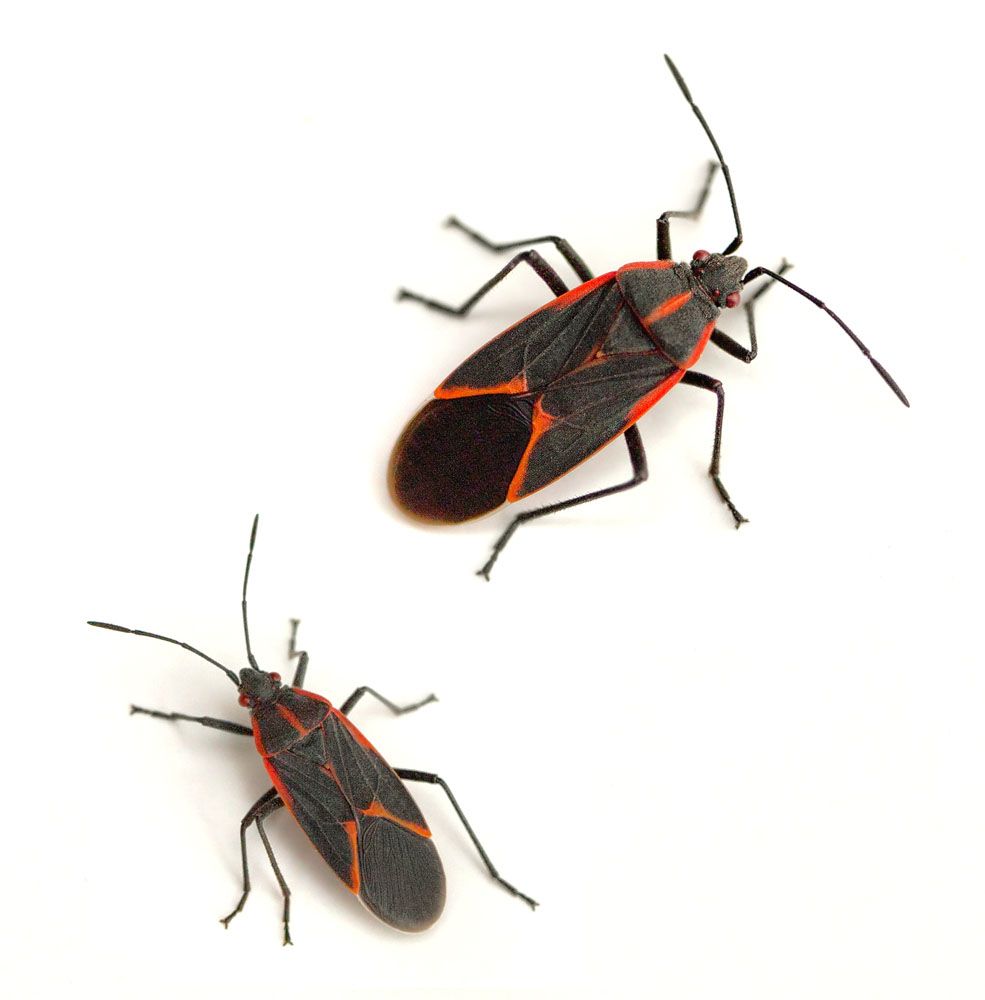
Boxelder Bug – Boisea trivittata
Boxelder Bug: Appearance, Territory, Damage and Life Cycle
Latin Name: Boisea Trivittata
Appearance: The boxelder bug is a genuine insect found in North America. It is mostly seen on boxelder trees, but sometimes on maple and ash trees. Adults are around 13 millimeters long and have dark brown or black coloring with red wing veins and patterns on the abdomen; nymphs are brilliant red.
Hosts Plants: The popular name for boxelder bugs comes from their major plant hosts, boxelder trees. They also eat other maples (Acer species) and a variety of other plants, including as buckeye, ash, strawberry, honeysuckle, plum, cherry, peach, grape, and apple.
Territory: Boxelder bugs are native to the western United States, but may be found from eastern Canada to the eastern United States, and west to eastern Nevada, anywhere boxelder trees grow. They awaken from hibernation in the spring and spend the warm months eating on their host trees until the weather cools.
Damage Insect Cause: Adults and nymphs feed on sap from seeds, flowers, and leaves, although they inflict minimal damage to plants. They will occasionally eat on growing fruits, such as apples, causing puckered ‘catface’ lesions to these plants. The main “damage” caused by these insects is their presence in large numbers on residential windows and porches. This is especially common in the spring and fall. Boxelder bugs are brownish-black in color, about 1/2 inch long, and have three red lines on their heads and a vivid red abdomen underneath their wings.
Life History and Habits: Boxelder bugs overwinter as adults in safe places, which commonly include homes. They emerge in the middle of spring and deposit eggs amid fallen boxelder, ash, and silver maple seeds. These seeds, as well as fruit trees, other low-growing plants, and occasionally dead insects, are consumed by the first-generation nymphs. They reach full maturity in early summer. During the late summer, a second generation emerges. Eggs are nearly totally placed on boxelder, especially seeds produced by female plants. If the weather permits, nymphs can grow on these seeds until October. Boxelder bugs seek winter refuge after frosts, at which time dwellings are invaded. Boxelder bugs have the ability to travel hundreds of yards from boxelder trees.
